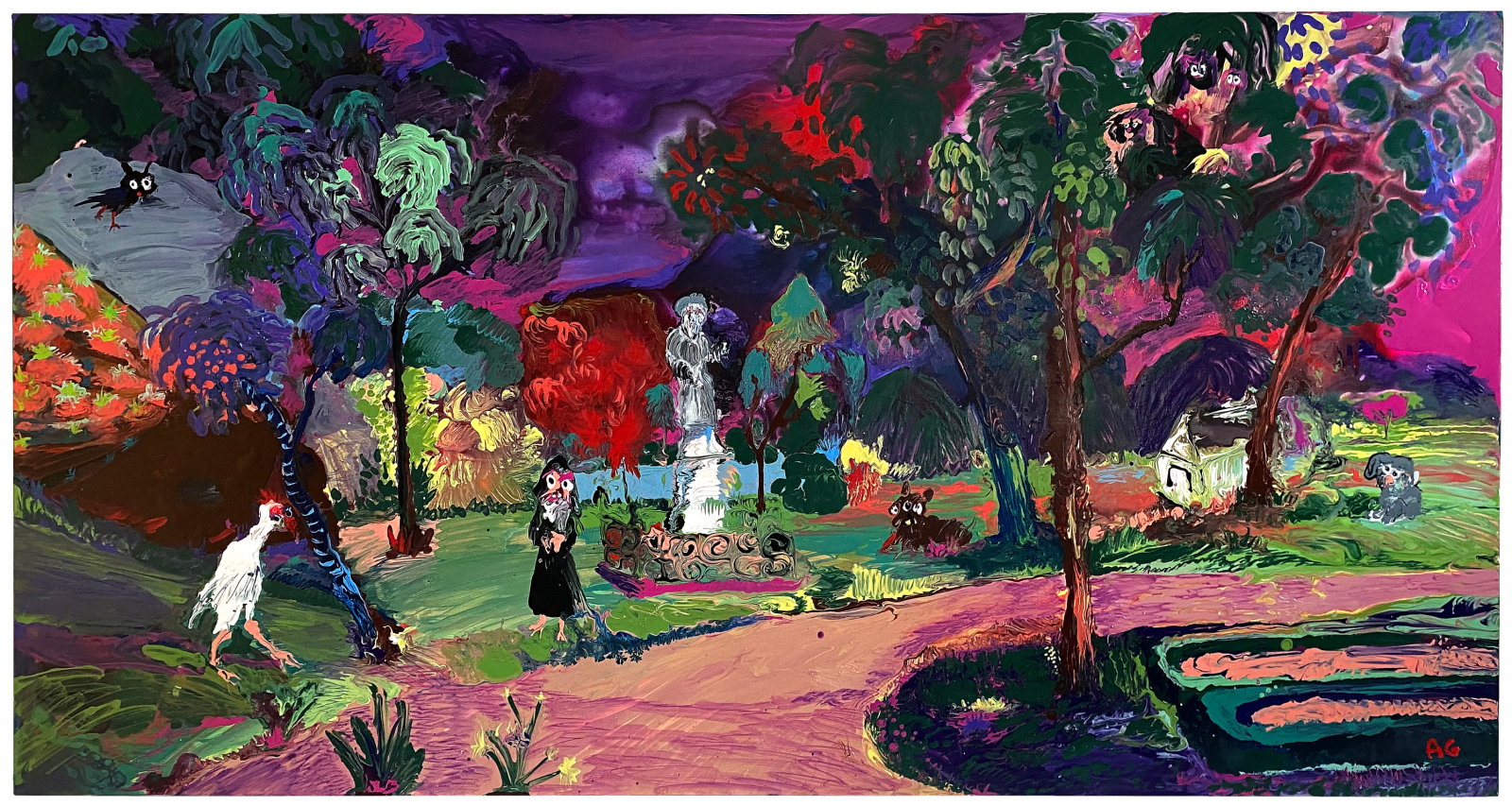Ardi Gunawan Indonesian, b. 1983
Friendly Ghost, 2024
Acrylic on canvas
152 x 79 cm
'These two new paintings continue my exploration of repurposing historical archives by intervening with the comic tragedy found in various contemporary cultural sources. They weave together two parallel narratives rooted...
"These two new paintings continue my exploration of repurposing historical archives by intervening with the comic tragedy found in various contemporary cultural sources. They weave together two parallel narratives rooted in 19th-century European gaze on tropical/transcontinental trade. Both paintings are reworkings of Josias Cornelis Rappard’s 1883 lithograph, capturing life inside the Dutch East Indies. However, I introduced a polar bear, not typically found in the tropical scenery, creating a Dada vision. In a way, I aim to create a kind of zoo where animals are transported from different geographical contexts into unexpected environments, and vice versa.
The other painting is a zoo populated with icons and symbols drawn from pop culture and natural history, such as angry birds, duck (on the left part), rabbit, and even a three-eyed domesticated cow. All these is to confuse the nun near the centre. (Her expression: she’s having a moment of catholic guilt). Here, I aim to explore interruption within historical works, yet both paintings are crafted carefully. I seek to eradicate any evidence of their 'found' origins, emphasizing that painting is about the convergence of temporal alterity: time, typography, and history/culture. Appropriation, in this sense, is not merely copying but treating the original image as an open score, where various musical notes are enacted and interpreted. Appropriation thus enables the convergence of temporal alterities.
"
The other painting is a zoo populated with icons and symbols drawn from pop culture and natural history, such as angry birds, duck (on the left part), rabbit, and even a three-eyed domesticated cow. All these is to confuse the nun near the centre. (Her expression: she’s having a moment of catholic guilt). Here, I aim to explore interruption within historical works, yet both paintings are crafted carefully. I seek to eradicate any evidence of their 'found' origins, emphasizing that painting is about the convergence of temporal alterity: time, typography, and history/culture. Appropriation, in this sense, is not merely copying but treating the original image as an open score, where various musical notes are enacted and interpreted. Appropriation thus enables the convergence of temporal alterities.
"
Join us!
Your one stop solution into bridging art and design.
* denotes required fields
We will process the personal data you have supplied in accordance with our privacy policy (available on request). You can unsubscribe or change your preferences at any time by clicking the link in our emails.
